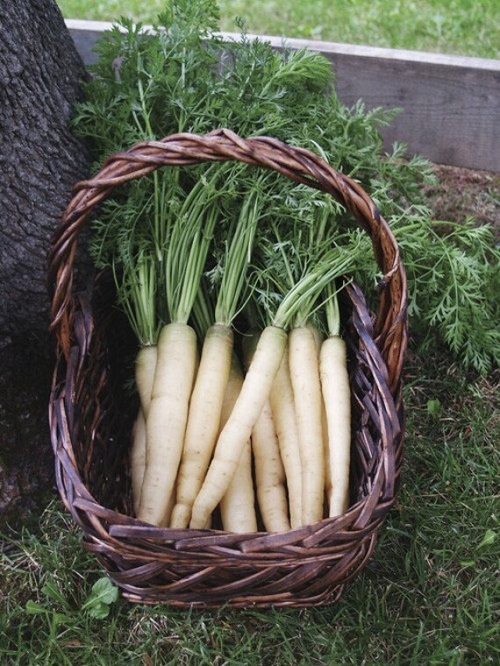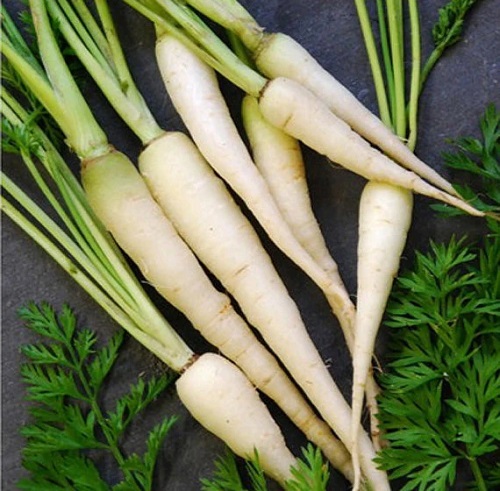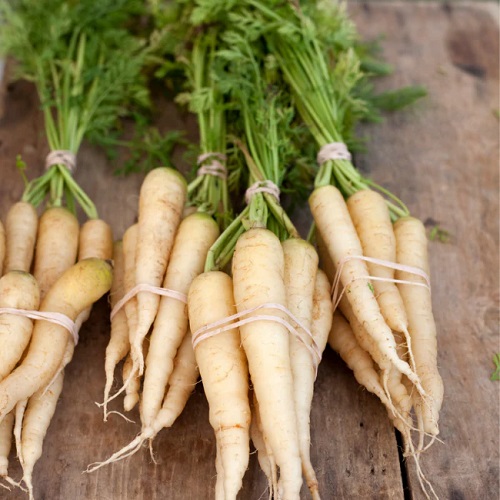These White Carrot Varieties can be a different addition to both your garden and platter! We have the tastiest ones for you!
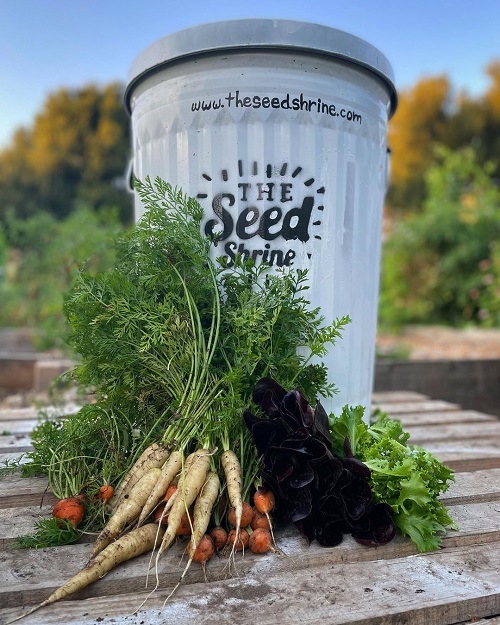
Step aside, orange carrots! White carrot varieties are taking the culinary and gardening world by storm, offering not just a unique hue but also an array of flavors and textures that make them a must-try. Whether you’re looking to elevate your next gourmet dish or seeking a show-stopping addition to your vegetable garden, these snow-white wonders are sure to captivate your interest.
Find out the Vegetables that Look Like Carrots here
What are White Carrots?
As their name suggests, white carrots are a special kind that lack the usual orange colour in favor of a distinctive pale white color. White carrots offer a unique twist in terms of beauty and culinary potential, despite orange carrots being the most well-known kind.
The remarkable white appearance of these carrots distinguishes them from their colorful relatives, which they are related to botanically and which have similar qualities. The crisp texture of white carrots is well-known, and they frequently have a slightly different flavor profile from other varieties of carrots.
How Do White Carrots Get Their Coloring?
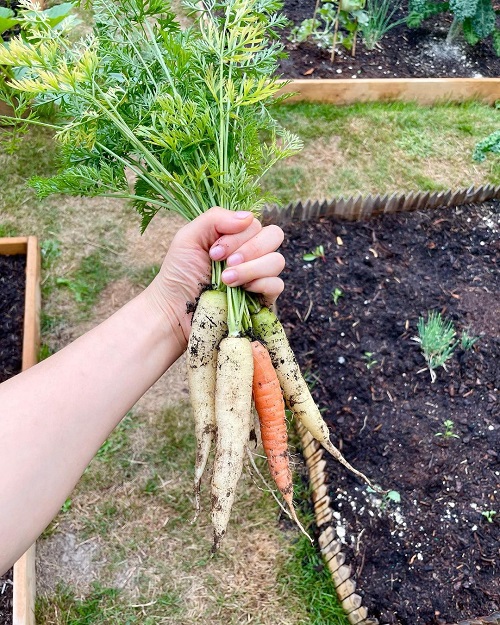
Carotenoids, the pigments that give orange and other colored carrots their vibrant colors, are absent from white carrots, impacting their color. Beta-carotene, in particular, is a valuable contributor to vitamin A and gives orange carrots their distinctive color.
White carrots, on the other hand, lack these colors due to a genetic mutation that stops the production of carotenoids.
White carrots may include different substances, such as anthoxanthins, which contribute to their light coloring, rather than carotenoids. Anthoxanthins are water-soluble pigments that may be found in various plants and give them colors like white, cream, and pale yellow.
Types of ZZ Plant Varieties To Grow Indoors
Are White Carrots Man Made or Natural?
Natural white carrots are older than the orange carrots we associate with this vegetable. The first carrots in antiquity were purple or yellow and were grown in Persia (modern-day Iran and Afghanistan). The modern orange carrot was developed through selective breeding and farming techniques.
Therefore, white carrots are a throwback to the early types before the widespread cultivation of orange variants. They are not produced artificially but are the outcome of normal genetic variances.
While white, purple, yellow, and even red carrots have been produced by contemporary agriculture, white carrots can be seen as a return to the diverse origins of this versatile and nutritious vegetable.
Here’s Everything you Need to Know about Growing Carrots
Types of White Carrot Varieties
1. Lunar White Carrot
Lunar White carrots are a non-GMO variety with a sweet and mild flavor. They typically grow up to 8 inches long.
- Culinary Uses: Ideal for stews, salads, and snacking.
- Growing Conditions: Well-suited for sandy, well-drained soil.
2. Snow White Carrot
This variety is known for its exceptionally sweet taste and crispy texture. It’s a bit shorter compared to Lunar White, usually around 6-7 inches.
- Culinary Uses: Great for juicing and raw consumption.
- Growing Conditions: Thrives in loamy, rich soil with good drainage.
3. Belgian White
Originating from Belgium, this heirloom variety has a high sugar content and a distinct, earthy flavor.
- Culinary Uses: Excellent for cooking and roasting.
- Growing Conditions: Prefers cool climates and slightly acidic soil.
Types of Radish Varieties for Containers and Gardens
4. Maruschka
This non-traditional variant stands out not just for its color but also for its unique flavor and versatile culinary uses. They are also really easy to grow.
- Culinary Uses: Due to their crisp texture and mild flavor, Maruschka white carrots are excellent for fresh salads and coleslaws.
- Growing Conditions: The soil pH should be between 6.0 and 7.0 for optimal growth.
5. Kuttinger White Carrot
The Kuttinger White Carrot is a lesser-known but highly intriguing variety of carrot, appreciated for its unique color and subtle flavor
- Culinary Uses: Their sweetness intensifies when roasted great for vegetable dishes.
- Growing Conditions: Kuttinger White Carrots thrive in well-drained, sandy-loam soil and require full sun.
Learn How to Grow Carrots from Carrot Tops here
Growing White Carrots
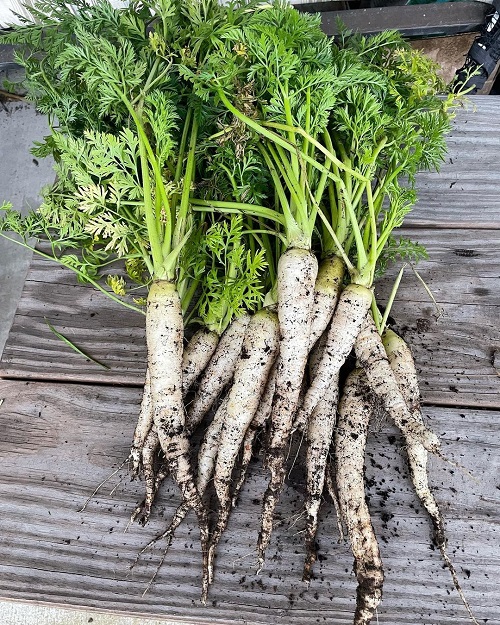
Soil Preparation
- Select the Right Soil: Choose loose soil that is well-drained. Avoid using heavy or clay soils since they can cause carrots to grow incorrectly shaped.
- pH Level: Aim for a soil pH between 6.0 and 6.8 for optimal growth and development.
- Fertilization: Employ a balanced fertilizer, but exercise caution with excess nitrogen, which may encourage excessive leaf growth at the expense of robust root development.
Planting
- Spacing: Plant white carrot seeds at a depth of 1/4 inch and space them 2-3 inches apart in rows. This ensures adequate room for growth and minimizes competition among plants.
- Watering: Maintain consistent soil moisture, particularly during the germination phase. Adequate watering promotes healthy seedling emergence.
- Temperature: White carrots thrive in cool temperatures during germination, with an ideal range of around 50-75°F (10-24°C).
Here’s A Beginner’s Guide To Create A Vegan Garden!
Maintenance
- Thinning: Once white carrot seedlings reach a height of approximately 2 inches, thin them to prevent overcrowding. Proper spacing allows individual carrots to develop fully.
- Weed Control: Keep the garden bed free from weeds that could vie for nutrients with white carrot plants. Regular weeding is essential for optimal growth.
- Watering: Ensure a steady supply of moisture to the soil, but be cautious not to overwater and cause waterlogging, which can hinder root development.
- Pest Management: Safeguard your white carrot crop by employing strategies such as using insect nets or row covers. These protective measures help shield plants from common pests like carrot flies.
- Rotation: To minimize the disease risk, consider implementing crop rotation practices. This involves changing the planting location of white carrots and other crops from one season to the next.
Harvesting Growing White Carrots

- Maturity Signs: White carrots are typically ready for harvest within 2-3 months after planting. Look for the tops of the carrot roots to become visible at the soil level to indicate maturity.
- Method: When harvesting white carrots, gently loosen the soil around each carrot using a fork before carefully pulling it out. This approach prevents damage to the root and preserves the quality of the harvested produce.
Here are Some Variegated Banana Plant Varieties
Hope you liked reading the article on White Carrot Varieties! Share your feedback with us in comments.

